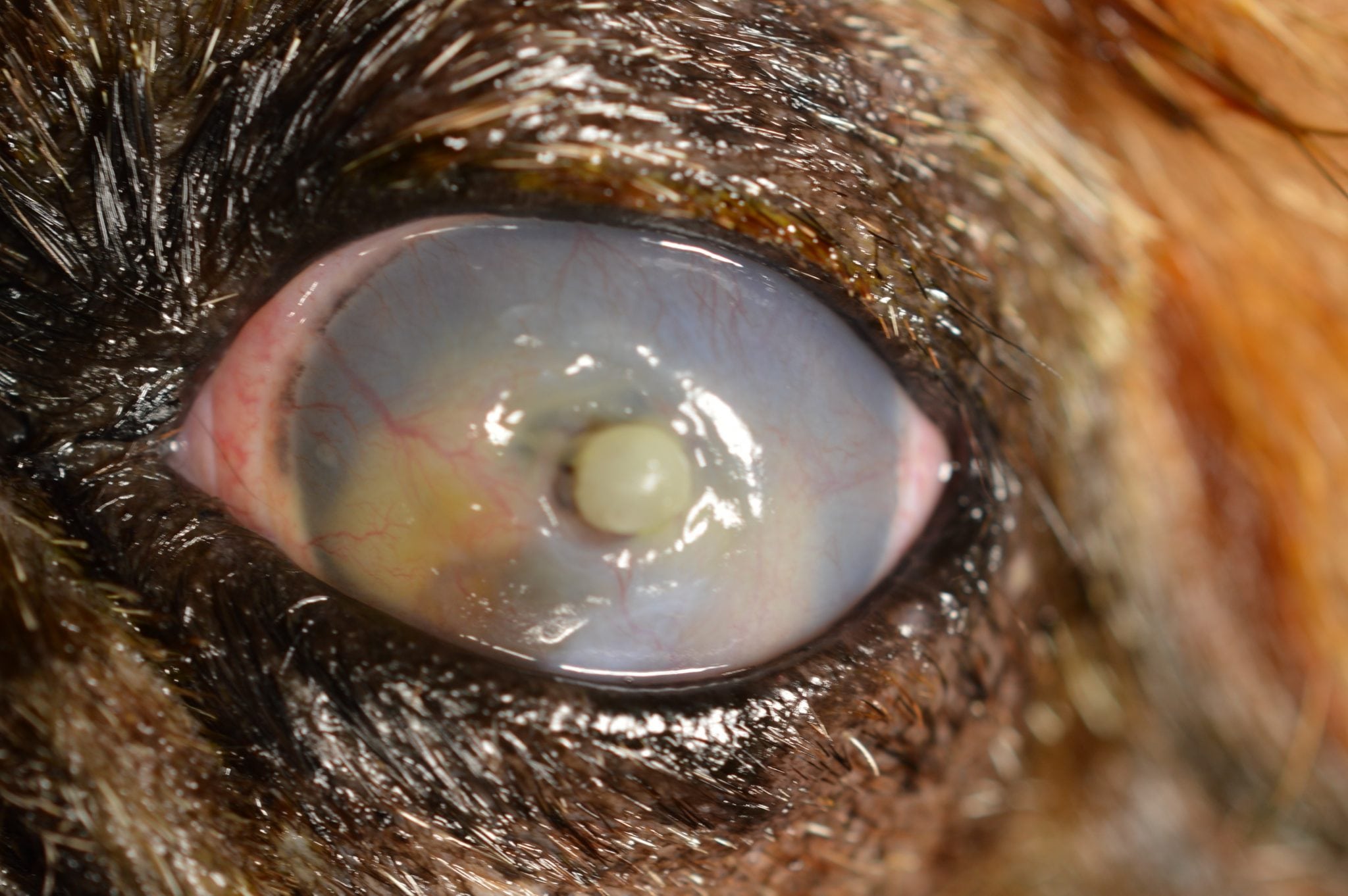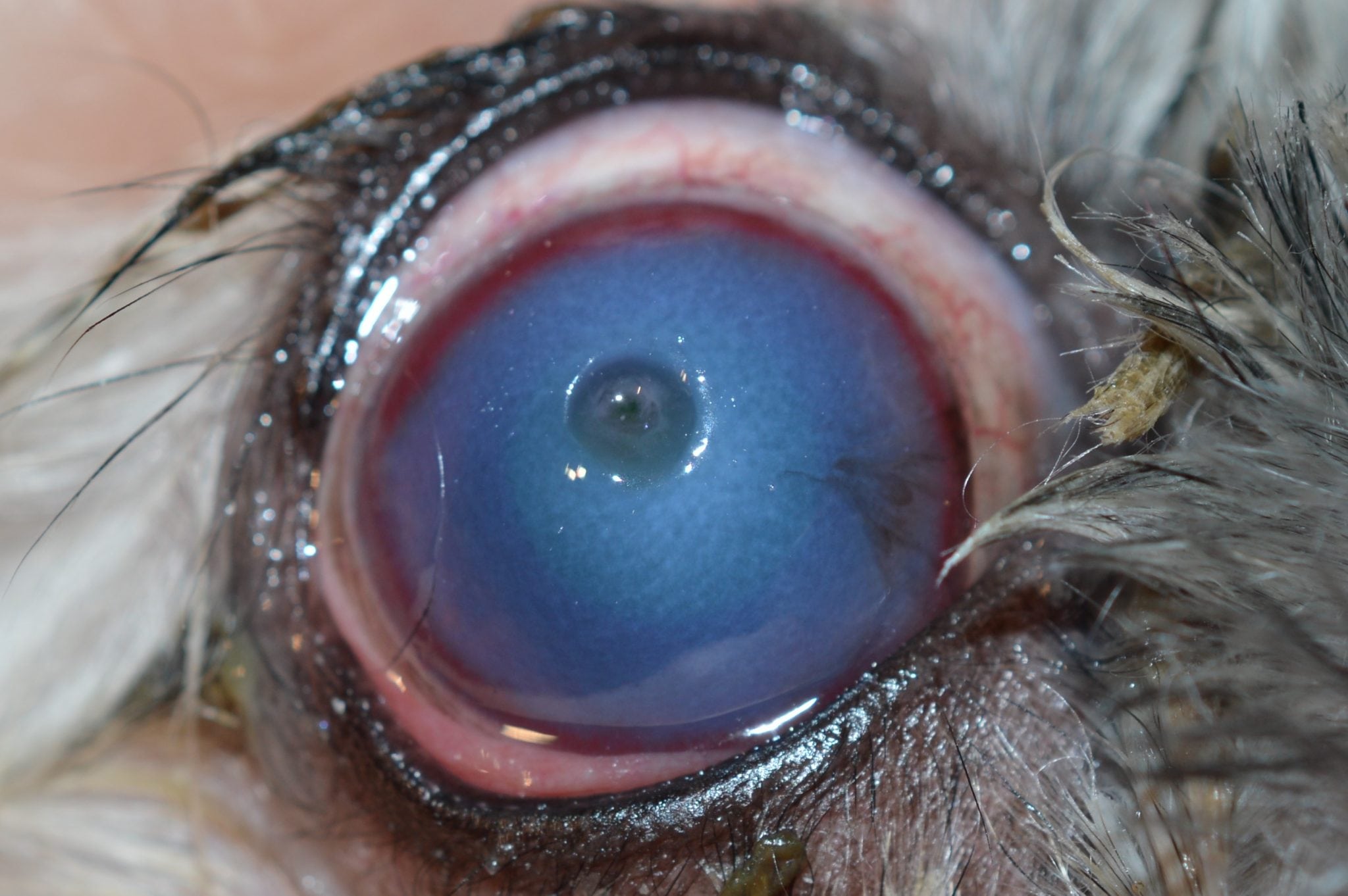Pet Corneal Perforation
Corneal perforation is a corneal defect that extends the full thickness of the cornea resulting in a rupture of the globe.
What are the clinical signs of corneal perforation?
Corneal perforations are quite painful, usually manifesting as squinting, rubbing, and avoidance of touching the affected area. Other common signs include ocular discharge, ocular bleeding, redness, mass on the cornea, cloudiness, and redness.


What are the causes of corneal perforation?
The most common cause of a corneal perforation is a corneal ulcer that progressed through the full thickness of the cornea (approximately 0.5mm). This can occur within hours of the development of the ulcer or slowly degrade over weeks to months with certain conditions.
What are the treatments of corneal perforation?
Basically, a corneal perforation is a “hole in the eye”. This is a structural problem, thus requiring surgery to correct. An array of grafting procedures can be utilized to address this structural defect. In the majority of cases, if the corneal perforation is recognized and treated promptly, the eye can be saved and vision restored. If the perforation is has resulted in extensive damage or is too chronic, then removal of the eye (enucleation) is indicated.
